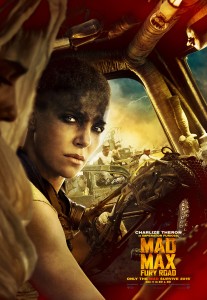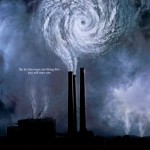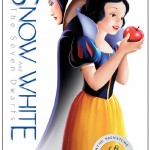 I do not subscribe to the mentality that there is only one acceptable Best Picture winner, and if that film does not win, the Academy made a huge mistake. First of all, even if your least favorite pick wins, the Academy has probably made worse mistakes in the past. Second of all, every year there are multiple nominees for Best Picture which are very good films, and any one of those films would be a deserving, worthwhile choice for the highest honor from the Academy.
I do not subscribe to the mentality that there is only one acceptable Best Picture winner, and if that film does not win, the Academy made a huge mistake. First of all, even if your least favorite pick wins, the Academy has probably made worse mistakes in the past. Second of all, every year there are multiple nominees for Best Picture which are very good films, and any one of those films would be a deserving, worthwhile choice for the highest honor from the Academy.
This year there are three films I would be happy to see win Best Picture. They are Brooklyn, Mad Max: Fury Road, and Spotlight. Brooklyn is a delightful film about wonderful, lifelike characters, a type of film of which there are far too few. As Ken said in his post, Spotlight is a great film which takes a challenging and nuanced approach to an important issue. However, since I could only vote for one if I were an Academy member, I am simply going to go by which one ranked highest on my top ten list and select Mad Max: Fury Road.
The reason for Fury Road slightly outranking Spotlight and Brooklyn in my book is that it is a flawlessly executed technical tour de force of filmmaking, one of the most exhilarating thrill rides in years, and it also shows more depth than most action films with its themes of social justice, feminism, and environmentalism. I realize that in mentioning those themes as one reason for Fury Road’s greatness, I am partially subscribing to the mentality that a great film has to be about an important subject. Even if Fury Road did not have those themes, that would not lessen its stunning execution, which is the primary reason it is my pick. Since the award is called Best Picture, I would love to see the film which I think has the best technical execution win it.
Overseeing Fury Road’s excellent craftsmanship is George Miller, who steps back into the director’s chair with even more firepower than when he directed the last installment of his franchise thirty years ago. The well-paced editing and sharply focused framing maintain clarity throughout all the of the action, even as that action accelerates to breakneck speed. With fluid camera work capturing the most epic car chase ever, it is remarkable that the story and action is so easy to follow. Unlike many other action films, regardless of how frenetic the action becomes, we never lose track of where we are or who’s doing what.
Fury Road’s detractors have complained that the film is basically a two hour car chase, and that is more or less true, but it is a car chase which doubles as a physical and emotional journey for the heroes as they slowly learn to trust one another and care about more than their own survival. The story may be simple, but it accomplishes everything it needs to for a high octane thriller, and it raises awareness for many important aspects of social justice which are absent in the dystopian world which Max inhabits.
Max’s opening line, “As the world fell, each of us in our own way was broken,” shows that it is easy to feel isolated and put oneself first in an ugly desolate world. Earlier this year, Pope Francis released his encyclical Laudato Si which stated that caring for one area of creation is inseparable from caring for all other areas as well. Fury Road’s integration of the social injustices and disregard for the environment drives similar themes home convincingly.
Another line from the film that is equally important is the cry of Immortan Joe’s trophy wives and their rescuer Furiosa (Charlize Theron): “We are not things!” Many action films relegate women to supporting characters who stand around as male eye candy. Theron’s Furiosa is in control throughout the whole movie – it’s more her movie than Max’s – and the plight of the wives is strongly articulated. More remarkably, Miller’s camera never ogles the scantily clad wives, even as they are played by supermodels. Fury Road’s treatment of women is a brilliant example of how to make a film about a world ruled by a sexist tyrant without having the film treat its female characters the same way. That alone is a rare achievement worthy of recognition.
Finally, the sheer spectacle of Fury Road is almost on the scale of grand opera; it’s dominated and driven forward by form and design. Not only is it the most exciting car chase I have seen in a movie, it is also the most car chase I have seen: the most cars, the fanciest cars, the most incredible stunts, and most incredible sets and props. The best summary is this quote from Steven Greydanus:
“This is a movie in which the enemy rides into battle spurred on by a truck full of war-drumming timpani players and an immense tractor unit stacked high with an towering array of amplifiers, upon which, dangling from bungee cords, flails a flamboyantly scarlet-clad, cowled heavy-metal guitar hero called the Doof Warrior, ferociously shredding a double-neck axe like a 1980s arena-rock superstar at the height of his guitar solo — and if this isn’t already the most bizarre sentence I have ever written, let me add that the guitar, for absolutely no practical reason at all, is also a fully functioning flamethrower.”
In a year that saw several iconic franchises from the ’70’s and ’80’s revived with well-received new installments, Mad Max: Fury Road stood out from the rest for the new directions it took the franchise and for its dazzling technical craftsmanship.
I expect Spotlight will win Best Picture, and I will not be disappointed if that happens. However, I would love to see an inspired sequel, brilliant piece of filmmaking, and thematically important work of art win Best Picture, and I hope that the Academy at least recognizes the skill that went into Mad Max: Fury Road and honors it with several technical awards.












